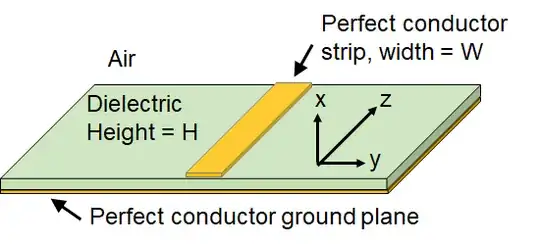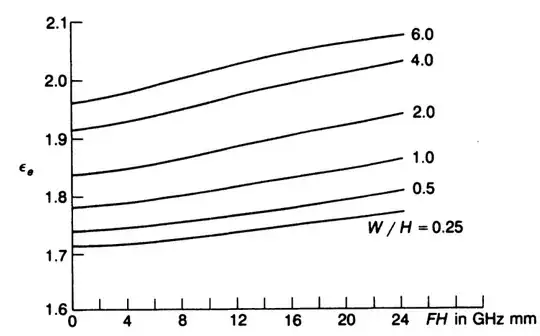A microstrip line is a waveguiding structure as shown below:

Because of the inhomogeneity, the fundamental mode of propagation is a quasi-TEM mode, which means that the z components of the E and H fields are much smaller than the transverse components, but nonzero. In the limit $freq \rightarrow 0$, both $E_z$ and $H_z$ tend to zero.
We know that the field pattern (on the transverse plane) of an "exact" TEM mode is independent of frequency. However, it is not the case for quasi-TEM modes. It is observed that the effective dielectric constant of microstrip is an increasing function of frequency, for example
 (figure taken from R. E. Collins, Foundations for Microwave Engineering. For the case of this figure, the relative permittivity of the dielectric material is 2.26)
(figure taken from R. E. Collins, Foundations for Microwave Engineering. For the case of this figure, the relative permittivity of the dielectric material is 2.26)
We assume that the dielectric material itself does not have significant dispersion in the frequency range of interest, so that this result is solely due to the behavior of the quasi-TEM mode. The increasing effective dielectric constant indicates that the electromagnetic fields tend to concentrate in the dielectric region as frequency goes higher. My question: is there an explanation for this field concentration behavior? Namely, why do high frequency fields like to stay in the dielectric more than in the air region?
Thanks for any comment.